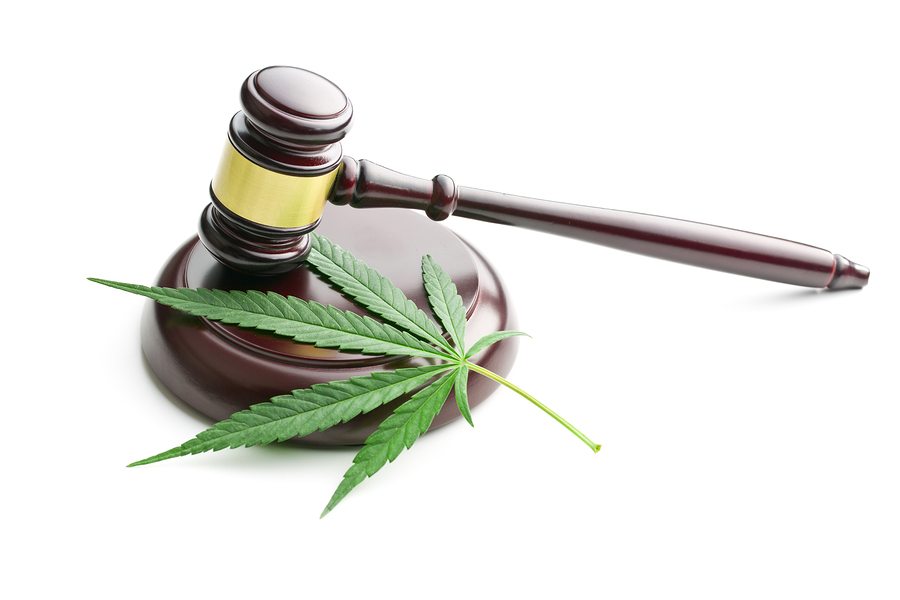Earlier this year, the National Institute on Alcohol Abuse and Addiction (NIAAA) conducted a study on the prevalence of “marijuana use disorder” or “Cannabis use disorder” (CUD). The study revealed that up to 6 million Americans – roughly 2.5% of the adult U.S. population – may be living with this “condition.” That sounds alarming at first, but there’s a major issue with the NIAAA’s findings: the currently accepted definition of CUD, as it exists in the DSM-V, has become so generalized that it can be easily over-diagnosed. By the current definition, nearly anyone using medical marijuana would fit the diagnosis, which is clearly not appropriate. The benefits of medical marijuana carry greater weight than the NIAAA’s contentions, and I’ll explain why by breaking down every single symptom in the DSM-V’s CUD definition.
Government Study Alleges Up to 6 Million Americans Are Addicted to Marijuana

According to the NIAAA’s study, which was published in the American Journal of Psychiatry in March, “The prevalences of 12-month and lifetime CUD were 2.5% and 6.3%,” and “Only 13.2% with lifetime CUD participated in 12-step programs or professional treatment.” The study concluded that “CUD is prevalent… and largely untreated. Findings suggest the need to improve prevention and educate the public, professionals, and policy makers about possible harms associated with CUD and available interventions.”
According to NIAAA Director George Koob, “The new analysis complements previous population-level studies… that show that marijuana use can lead to harmful consequences for individuals and society.”
When you take these statements at face value, they paint a rather dire image of a nation in the throes of a dangerous addiction. However, when you actually analyze the way the DSM-V defines CUD, you’ll see that CUD is little more than a tautology: defining a thing as itself. If any use of Cannabis means there’s a problem, in light of the use of Cannabis for legitimate medical benefit, we’ve got a problem with the definition.
By effectively defining CUD as any marijuana use – not exactly the most insightful assessment – the DSM-V shows blatant disregard for Cannabis as medicine, not to mention patients’ free will. Even though the DSM has for decades been accepted as the gold standard of psychological diagnosis (with the DSM-V being its most recent iteration), it’s still written by humans, and humans are influenced by the politics of the times.
CUD, which is a new diagnosis in the DSM-V, merges a few diagnoses from the DSM-IV, which has actually made the diagnosis broader and less specific. According to the DSM-V, CUD is characterized as “A problematic pattern of Cannabis use leading to clinically significant impairment or distress, as manifested by at least two of the following [symptoms], occurring within a 12-month period.”
Let’s take a look at each of these individual symptoms to show why the NIAAA’s findings are somewhat misleading with regard to medical patients.
How the DSM-V Defines Cannabis Use Disorder (CUD)

The broad issue underlying all of the following CUD criteria is that they focus on the intent of the person using Cannabis, as interpreted by the diagnostician who, again, can over-apply these criteria.
For recreational users, the intent is simply to get high, which, while not harmful in and of itself, can become problematic if it starts to interfere with daily life. But for medical users, daily life is already being interfered with by a serious health condition. For these people, the intent behind using marijuana is to feel better, enjoy a greater quality of life, and perhaps find greater independence by alleviating the effects of a debilitating illness.
This intent may not be accurately reflected in the assessment of a clinician, because most of the CUD “symptoms” appear to have been written with medically unnecessary use in mind. In short, the DSM-V implies that marijuana use is destructive, while the opposite is true for the vast majority of Cannabis patients – some of whom find that marijuana works when little to nothing else does.
- Symptom #1 – “Cannabis is often taken in larger amounts or over a longer period than was intended.”
This symptom becomes downright nonsensical when you consider the conditions that qualify for medical marijuana. In Massachusetts, these conditions are “Cancer, glaucoma, [HIV positive status]… AIDS, hepatitis C… ALS, Crohn’s disease, Parkinson’s disease, [and] multiple sclerosis.” Every single one of these conditions is chronic, meaning it will last for many months, years, or the rest of the patient’s life. Patients enter the process intending long-term use. - Symptom #2 – “There is a persistent desire or unsuccessful efforts to cut down or control Cannabis use.”
Medical marijuana users generally have little desire to cut down on use, because they need the Cannabis in order to control debilitating pain and/or other symptoms. That said, a responsible doctor should prescribe no more than is needed. Indeed, state law limits patients to a 60-day supply at one time. - Symptom #3 – “A great deal of time is spent in activities necessary to obtain Cannabis, use cannabis, or recover from its effects.”
There is no need for patients to spend “a great deal of time” tracking down Cannabis. They simply go to a Massachusetts marijuana dispensary, or, if that’s too much of a burden, obtain a hardship cultivation registration. For patients, it’s the underlying condition that takes time and energy to recover from – not the medicine they use to manage it. - Symptom #4 – “Craving, or a strong desire or urge to use Cannabis.”
This seems like a given, considering the fact that patients use Cannabis to relieve symptoms such as pain, joint stiffness, insomnia, and poor appetite – none of which are exactly conducive to a healthy lifestyle. - Symptom #5 – “Recurrent Cannabis use resulting in a failure to fulfill major role obligations at work, school, or home.”
This is a legitimate concern, but many patients are disabled and cannot work, or do not work or attend school because they are elderly. If you think Cannabis is getting in the way of your responsibilities, you should absolutely talk to your doctor. - Symptom #6 – “Continued Cannabis use despite having persistent or recurrent social or interpersonal problems caused or exacerbated by the effects of Cannabis.”
This is also a legitimate concern, but most patients actually report improved relationships as they become more able to engage and participate in activities due to feeling physically and/or emotionally better – for example, people suffering from the effects of anxiety or depression. Cannabis can also improve sexual wellness for men and women, which can help keep romantic relationships healthy and fulfilling. - Symptom #7 – “Important social, occupational, or recreational activities are given up or reduced because of Cannabis use.”
See Symptom #6 above. - Symptom #8 – “Recurrent Cannabis use in situations in which it is physically hazardous.”
This is a real and serious concern, to the DSM-V’s credit. You should never drive or operate heavy machinery while under the influence of marijuana; but that also applies to alcohol and countless, uncontroversial prescription drugs. - Symptom #9 – “Cannabis use is continued despite knowledge of having a persistent or recurrent physical or psychological problem that is likely to have been caused or exacerbated by Cannabis.”
This may apply to recreational users, but for medical patients, the situation is reversed: they start using Cannabis to treat a “physical or psychological problem.” - Symptom #10 – Tolerance (needing more over time, or feeling decreased effects from the same amount).
Tolerance is a consequence of long-term Cannabis use. However, it is not dangerous in that you cannot overdose on marijuana. Moreover, some patients have progressive illnesses whose symptoms worsen with time, which means more Cannabis is needed for effective symptom management. The same can be said of numerous prescription medications. - Symptom #11 – Withdrawal.
Withdrawal is an indicator of physical dependence, which, as I’ll explain in a moment, is uncommon. It is also temporary and rather mild, typically characterized by insomnia and irritability. Cannabis withdrawal is in no way life-threatening, unlike withdrawal from alcohol.
Have Questions About Qualifying for Medical Marijuana in Massachusetts?
None of this is meant to imply that marijuana addiction and dependence are nonexistent or impossible, even among medical patients. As I just mentioned, a small number of people do become dependent: about 7% of users under age 26, and up to 3% of users 26 and older. For some people, Cannabis use does become problematic, and these people are urged to see a doctor or therapist for professional guidance. My point here is simply that medical marijuana has extremely valid uses for millions of people. Building an entire disorder upon a flawed foundation obscures the real issues, and is counterproductive to a clear, open, and honest discussion of Cannabis’ benefits and drawbacks.
If you’re living with a serious medical condition in Massachusetts, medical Cannabis may be able to help provide additional relief in conjunction with traditional treatment. A Boston marijuana doctor can provide more information. To talk about whether medical marijuana could be right for your condition, call Inhale MD (617) 477-8886.

